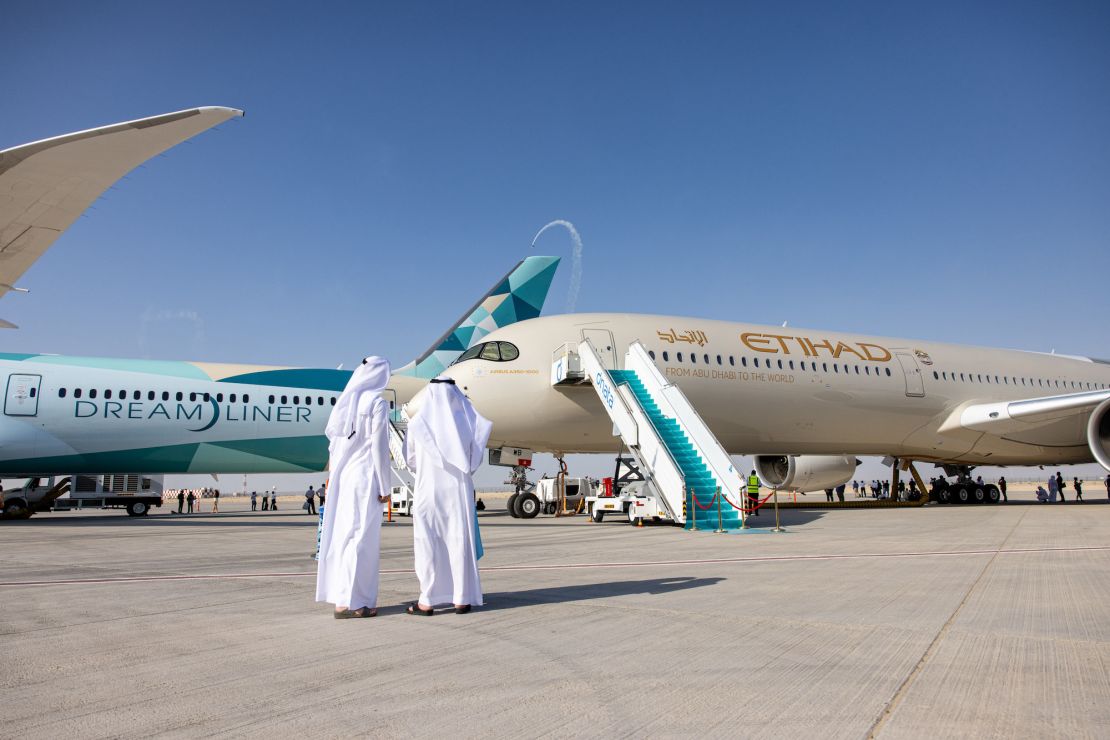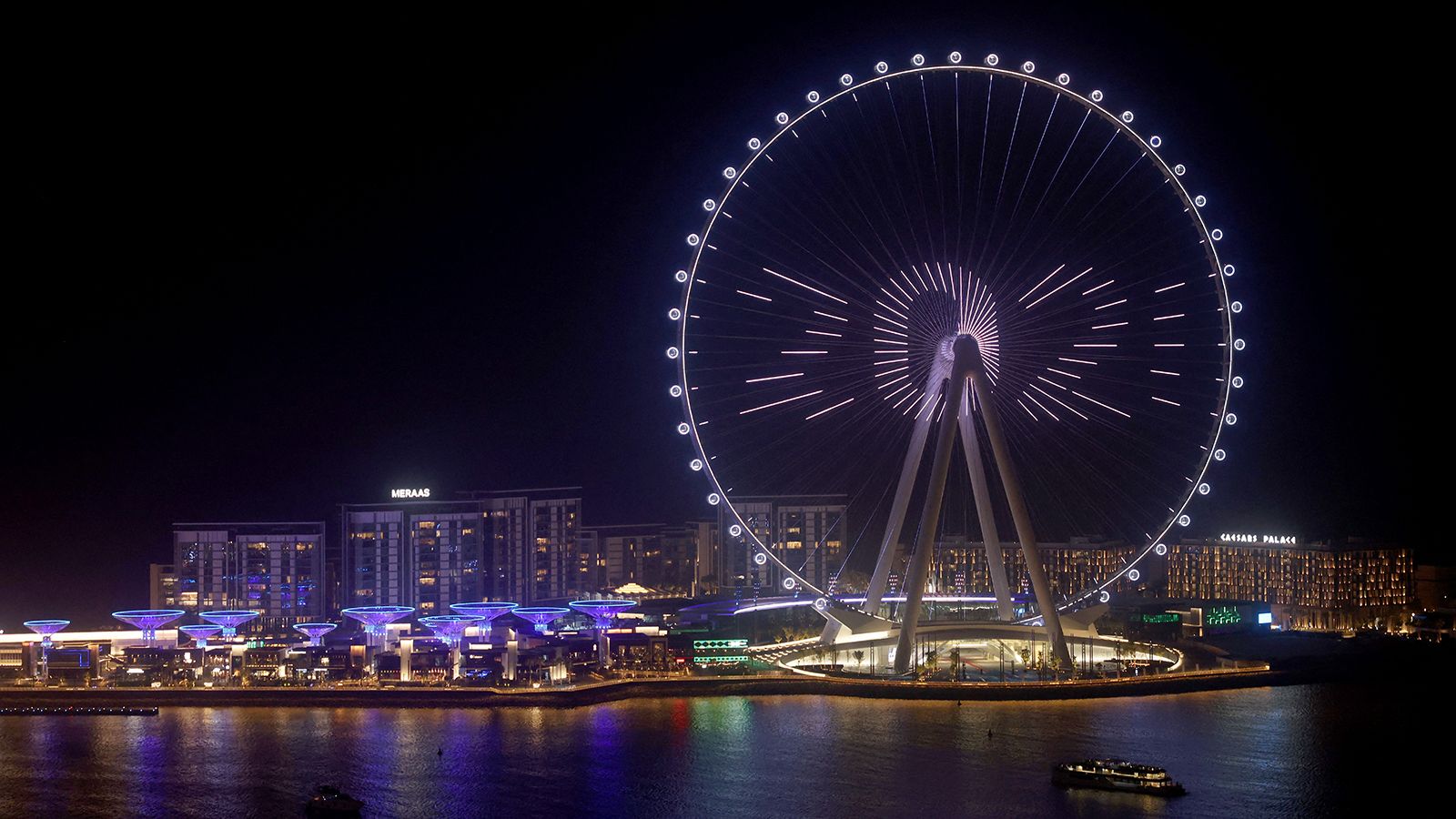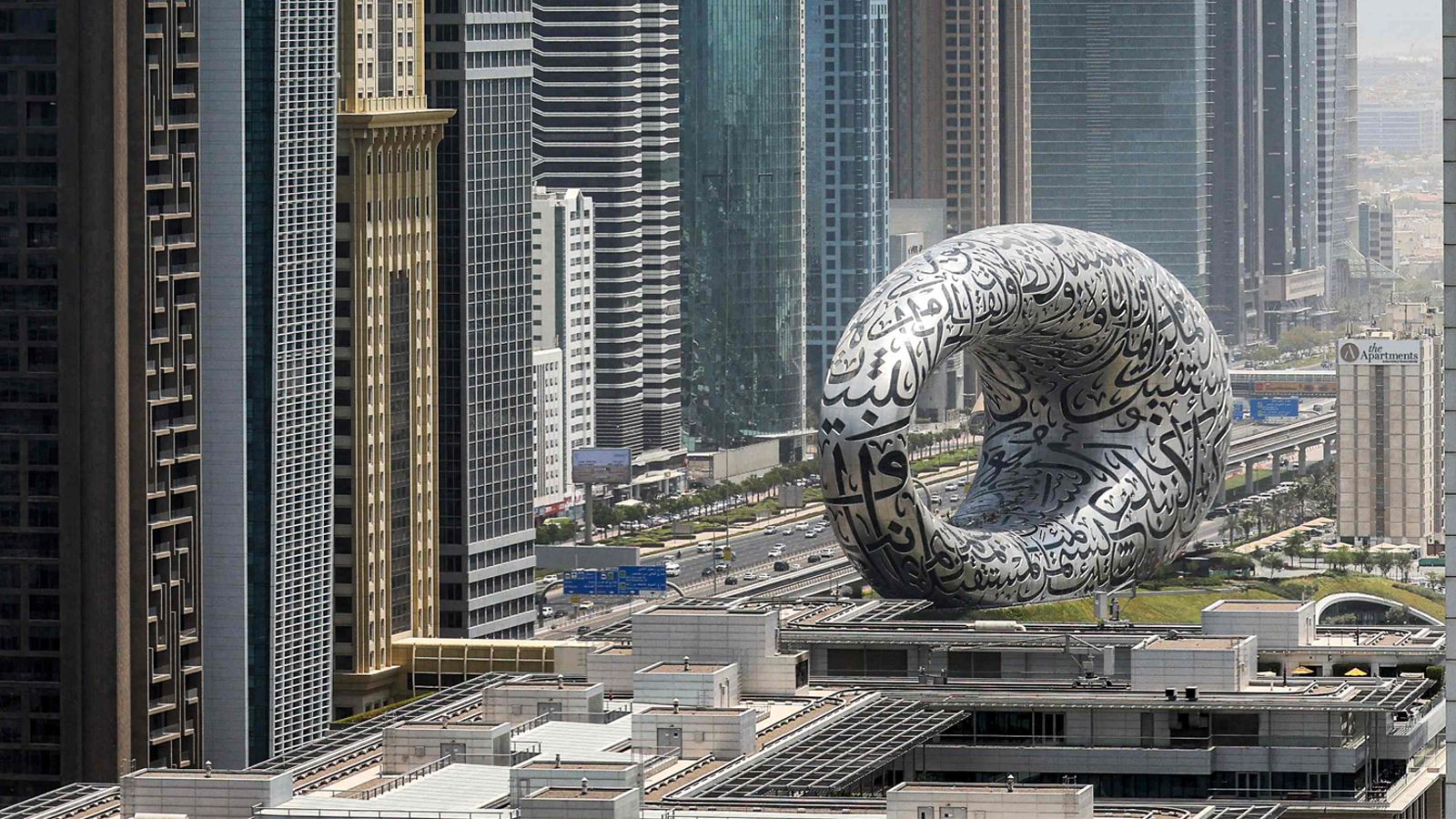One country, two major airlines operating world-class long-haul fleets out of different major aviation hubs located close to one another.
On paper, the United Arab Emirates’ ownership of two powerhouse global longhaul carriers with largely overlapping international air networks that converge so closely might seem an extravagance too far. Isn’t one enough?
And so, the announcement by Emirates and Etihad of a new deal to work more closely will inevitably revive rumors of a potential merger between the two: something long discussed at a kind of academic level in aviation circles, particularly during tough economic times, but one potentially stymied by local politics – and the fact that their status symbol hub airports are an hour apart on the ground.
Earlier this month, the two airlines, both still coming back from the disruption caused by the pandemic, agreed on a so-called “interline” partnership. The move raises questions about what that means for passengers, and whether a new regional super airline is finally on its way.
Emirates and Etihad are both flag carriers of the UAE, the small Gulf country made up of seven emirates. Emirates, established in 1985, is based in Dubai and is one of the world’s largest airlines by most metrics. Etihad is newer, established in 2003 and based in Abu Dhabi.

Dubai International Airport and Abu Dhabi International Airport are fewer than 150 kilometers (100 miles) apart and the drive between them takes around 75-90 minutes depending on traffic. By and large, the Emirati capital city Abu Dhabi is known for being smaller and quieter than its glitzy, livelier northeastern neighbor Dubai, but both certainly have their draws for travelers in addition to being regional economic centers.
One of the big questions that pops up every time Emirates and Etihad are mentioned in the same announcement is whether it means a closer partnership – reciprocal agreements for frequent flyer benefits, codeshare flights and even a prospective merger.
Addison Schonland, partner at consultancy AirInsight Group, plays down the prospect of a merger, characterizing the interline agreement as “primarily a regional tourism marketing effort.”
“When these two airlines announced previous memorandums of understanding on aviation security in 2018 and another in 2022 on promoting Abu Dhabi, these agreements did not lead to integration,” he says. “Every time Emirates and Etihad announce joint initiatives, they are asked if this would lead to integration. Every time the answer is a firm ‘no’.”
Indeed, says Schonland, “these airlines follow their own strategies on codeshare and interline agreements, like the recent one between Emirates and United Airlines or the one between Etihad and Gulf Air in 2021.”
But what is interlining, and what does it mean?

Interline agreements are one of the earliest steps two airlines take when they want to cooperate. Usually, from the passenger standpoint, if you’re connecting from a flight on airline A to airline B, interlining means that you can check your bags in with airline A and not have to collect them at the connecting airport to then check them in again with airline B.
This agreement between Emirates and Etihad seems to be a little more expansive than that and looks to also cover what is known as open-jaw ticketing: flying into one city and out of another. That’s the kind of thing that travelers to Europe or Japan do quite often, to avoid having to backtrack on themselves as they explore – and it can be really useful.
“In the initial stages of the expanded interline, each carrier will focus on attracting visitors to the UAE by developing inbound interline traffic from select points in Europe and China,” the two airlines said in a joint statement about the partnership.
“The ‘open jaw’ arrangement will allow visitors to cover as much ground as possible when exploring Abu Dhabi, Dubai or any other emirate, saving time by removing the need to fly home via their arrival airport.”
To give an example, let’s imagine that you’re coming from Europe or China at the beginning of this new program. If you were flying into Dubai International Airport but wanted to visit the Sheikh Zayed Grand Mosque in Abu Dhabi, you’d have to travel down and back to fly home from Dubai. Now, you can fly into Dubai and out of Abu Dhabi, or vice versa.
The double open-jaw is where options might get very interesting
Relatively unusually, you can also do a kind of double open-jaw.
“Customers traveling into the UAE also have the option of ‘multi-city flights,’ with the choice to travel from one city on both carriers’ networks, and conveniently returning to another point served by either Emirates or Etihad,” said the airlines’ joint statement.
That’s convenient for a number of reasons.
First, you might find flight deals or better timings for your schedule out of one airport in your home region but back to another – flying out of Copenhagen and back into Stockholm, say.
Second, you may well be able to use this on a longer trip as well: flying from Beijing to Abu Dhabi, spending time exploring the UAE, and then flying out of Dubai to somewhere else, perhaps a city that Etihad itself doesn’t serve but Emirates does.
If the new interlining agreements are eligible in the region where you’re flying from, you might find some real bargains, especially if the idea of a stopover for a few days on the trip out and on the way back sounds appealing.
Both Abu Dhabi and Dubai are attractive from the stopover point of view: They’ve got loads of hotels at many price points, including some very reasonably priced resort-style hotels with big pools and sunshine on tap.
It’s worth keeping an eye out to see whether either Emirates or Etihad – or both – start to offer extended stopover options, or expand existing stopover deals like the Dubai Connect program. Here, if your connection to your onward destination is more than six and less than 26 hours, Emirates will put you up in a hotel for the night as a mini-stopover.
Should I fly Emirates or Etihad?
From an on-board perspective, both Emirates and Etihad are highly regarded airlines with some of the best passenger experience you can find. By and large, for most passengers you won’t find much of a difference in economy between the two airlines.
However, if you do have the option to choose between flights, pick airplanes – of either airline – with wider economy class seats like the Airbus A380 and A350, rather than the narrower seats of the Boeing 777 and 787 that these airlines operate. There’s usually no pricing difference, but the difference between 18.5” and 17” in seat width can feel massive, and the extra room at the shoulder and in the aisles is also a plus.
And bear in mind if you’re more of a premium economy traveler, Emirates is the only one of the two airlines to offer it, and only on some routes.
















